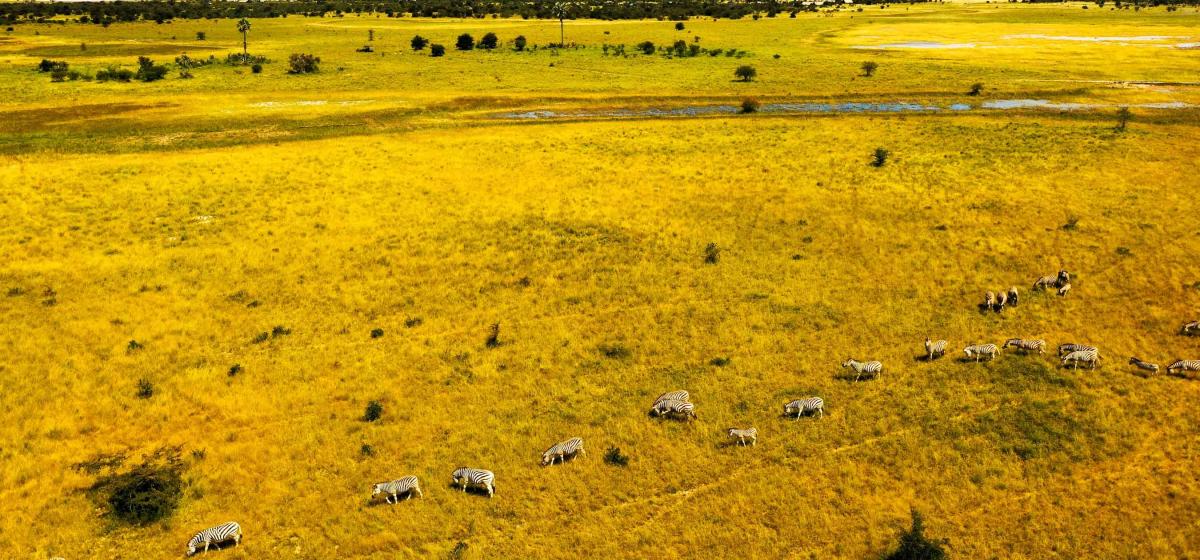Botswana's climate is semi-arid. Though it is hot and dry for much of the year, there is a rainy season, which runs through the summer months. When it does rain, it tends to be episodic, unpredictable, and highly regional. Often a heavy downpour may occur in one area while 10 or 15 km away there is no rain at all. Showers are often followed by strong sunshine so that a good deal of the rainfall does not penetrate the ground but is lost to evaporation and transpiration.
'Pula', one of the most frequently heard words in Botswana, is not only the name of Botswana's currency, but also the Setswana word for rain. Similarly, the word is used as a toast, where in other countries you might wish good health. So much of what takes place in Botswana relies on this essential, frequently scarce commodity.
Seasons in Botswana
With the exceptions of the early summer that bring searing heat, Botswana’s climate is one of its biggest drawcards. The summer season begins in November and ends in March. It usually brings very high temperatures. However, these high temperatures bring unstable conditions and rain. Rain and cloud cover can cool things down considerably, although only usually for short periods of time.
The winter season begins in May and ends in August. This is also the dry season when virtually no rainfall occurs. Winter days are invariably sunny and cool to warm. However, with no cloud cover, evening and night temperatures can rapidly fall reaching below zero in some areas, especially in the southwest.
The in-between periods - April/early May and September/October - still tend to be dry, but the days are cooler than in summer and the nights are warmer than in winter.
Rainfall
The rainy season is in the summer, with October and April being transitional months. January and February are generally regarded as the peak months. The mean annual rainfall varies from a maximum of over 650 mm in the extreme northeast area of the Chobe District to a minimum of less than 250mm in the extreme southwest part of Kgalagadi District. Almost all rainfall occurs during the summer months while the winter period accounts for less than 10 percent of the annual rainfall. Generally, rainfall decreases in amount and increases in variability further west and south.
Temperatures
Summer days are hot, especially in the weeks that precede the cooling rains, and shade temperatures rise to the 38°C mark and higher, reaching a blistering 44°C on rare occasions. Winters are clear-skied and bone-dry, the air seductively warm during the daylight hours but, because there is no cloud cover, cold at night and in the early mornings. Sometimes bitterly so - frost is common and small quantities of water can freeze.
Humidity
In summer during the morning period humidity ranges from 60 to 80 % and drops to between 30 and 40 % in the afternoon. In winter, humidity is considerably less and can vary between 40 and 70% during the morning and fall to between 20 and 30 % in the afternoon.
For tourists, the best months to visit are from April through to October - in terms of weather and game viewing. During this period, the wildlife of the great spaces gather around what water there is - the natural waterholes and the borehole-fed dams - and are at their most visible. Visibility is also increased when the weather is drier and the grasses are lower.











